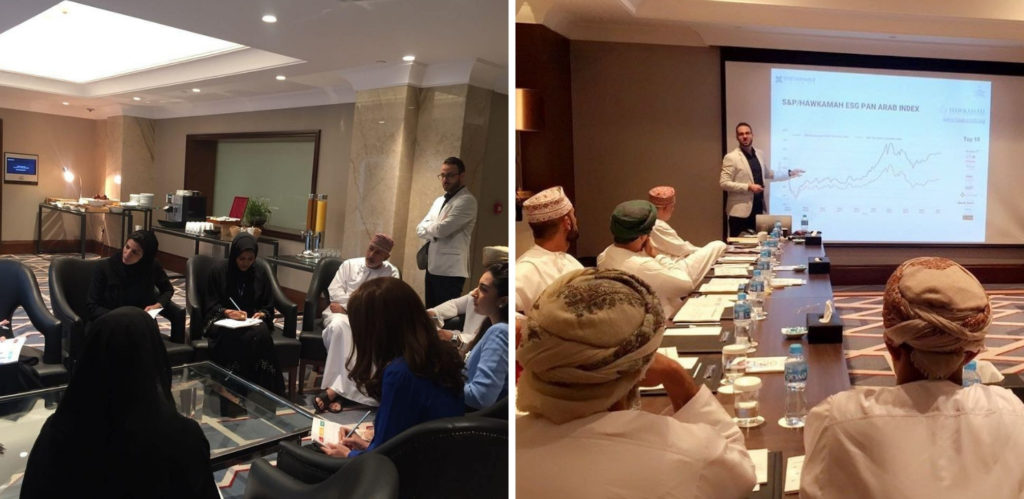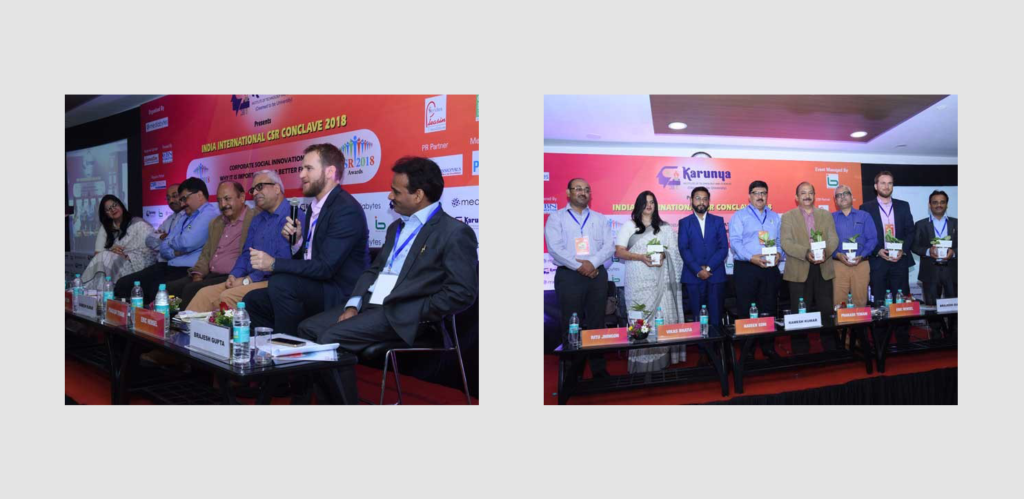Sustainability is becoming one of the most important focus areas for many companies around the world. Across all industries, majority of executives consider a sustainability strategy and reporting as key to competitive advantage. Simply put, sustainability is a business approach to creating long-term shared value by considering how an organisation operates its ecological, social, and economic environments.
However, corporate sustainability management practitioners possess excellent insights into the numerous challenges faced when writing or structuring sustainability reports and disclosures. As these reports usually need to answer to the needs of an array of different stakeholders, follow the complex mix of reporting standards, tell the company’s story, and use the power of reporting to help improve a company’s performance.
As a sustainability consultancy and think tank operating for the last 9 years and working with over 80 organisations in 5 different countries. We at Sustainable Square have accumulated enormous amounts of knowledge and experience in understanding the depth of all the challenges that companies face in all the different industries and locations that we have worked with.
Throughout the years, we have thought, researched, and investigated different ways and methodologies that would allow our clients to overcome these hurdles. To elevate, transform and above all automize corporate sustainability into a structured, well-managed and defined activity that is carried out accurately and consistently to help our clients excel in their sustainability data management processes.
With that said, we are beyond proud and excited to see our years of work and experience, all come to life with a product that takes our work on corporate sustainability to another level. SQUARELY – Sustainability Management Software, is a software solution that resolves all the challenges that companies face in embedding corporate sustainability into their identity and DNA. Moreover, it reinvents sustainability management by answering to all the growing demands and aspirations of the market, and above all, by enhancing accuracy, accountability, and transparency of sustainability data, a goal that we have aspired for as practitioners ever since.
A Glance into some sustainability management challenges and SQUARELY to the Rescue
MULTIPLE REPORTING FRAMEWORKS
The Challenge: Standards and frameworks play an essential and positive role by substantially increasing the quality and decision-usefulness of reports. However, while each reporting framework has its own purpose and rationale, multiple reporting frameworks can appear confusing and conflicting. This proliferation can complicate the reporting field, especially given their varying or conflicting metrics, definitions, and priorities. Practitioners struggle to reconcile this fragmentation with an aspiration to increase the comparability and efficiency of reporting.
The Solution: SQUARELY is developed on the basis of SIX of the most recognised frameworks in the world. By aligning all the disclosures and metrics of all these frameworks, companies no longer need to build projects and disclosures on each and every framework separately, but can now see all their data mapped to whatever framework they see fit for their company at a click of a button.
MULTIPLE TARGET STAKEHOLDERS
The Challenge: While financial reports (such as Form 10-Ks) have investors as their sole audience, sustainability reports cater to multiple target audiences with varying expectations for what a company should report. Practitioners are increasingly aware of a need to tailor sustainability reports to their target audiences but remain challenged to develop reports that provide their diverse set of stakeholders with the “right” disclosures to inform the “right” decisions.
The Solution: SQUARELY understands the complexity of stakeholder views that need to be embodied in the sustainability agenda, it allows its users to engage with and survey all their stakeholders in different languages to take part in their definition of risk or focus areas that they are expected to answer to. The genius of SQUARELY, is that it has over 35 internal and external stakeholder groups, where companies can choose as many as they need to include in their engagement process, and can also choose an unlimited number of stakeholders in all groups to engage with and take their feedback from.
DIFFERING DEFINITIONS OF MATERIALITY
The Challenge: According to the U.S. Supreme Court, information is deemed material if there is “a substantial likelihood that the disclosure of the omitted fact would have been viewed by the reasonable investor as having significantly altered the ‘total mix’ of information made available.” However, using the term “materiality” in the context of sustainability reporting and identification of issues relevant to stakeholders beyond investors can cause confusion within companies. As sustainability related issues or risks are continuously growing for each and every industry, it is beyond complex and time consuming for companies to identify and capture all the social, environmental and economic risks associated with their relevant industries in all their different areas of operations.
The Solution: SQUARELY, does not only allow you to engage with numerous stakeholders, but it also has a library of sustainability material issues for over 12 different industries. This library is a result of our intellectual property as a consultancy, and from an ongoing research on different industries, frameworks, and legislation, that highlight all the different risk areas in different industries and in different geographical locations.
ONGOING DEVELOPMENT OF ENVIRONMENTAL METRICS
The Challenge: When it comes to scrutinizing environmental impact, Greenhouse Gas emissions are from the most complex areas that companies need to focus on. As corporate activities produce GHG emissions from numerous sources of their operations, the emission factors used to compute all these emissions are beyond complex and are continuously updated and revised from numerous legislative sources. These ongoing variations from governments, environmental organisations or scientific bodies pose on of the greatest challenges to sustainability reporting, and are probably the most time consuming factor of these reports, as they require great amounts of research and technical expertise to accurately calculate the nearest to reality emissions that a certain company is responsible for.
The Solution: SQUARELY has a library of continuously updated metrics of over 100 different emission factors that follow the Greenhouse Gas Protocol of GHG inventory calculations. These emission factors are structured in a manner that the user does not need to compute any number, but the platform itself calculates all their Scope 1, Scope 2 and Scope 3 GHG emissions. The emission factors built in the platform are derived from the most renounced sources, such as the Intergovernmental Panel on Climate Change, Environmental Protection Agency, Market based energy factors, International Civil Aviation Organisation, and many others.
SCATTERED DATA THROUGHOUT THE ORGANISATION
The Challenge: As mentioned earlier, sustainability disclosures cover all social, environmental, and economic areas of a company’s performance. With that said, these disclosures are usually scattered throughout an organisation, and rarely aggregated or effectively managed, or even if they were, they usually require months of conversations and collaborations from all different departments to gather all this data for the scheduled annual reports. Such manifold activity is not only time consuming but also poses greater challenges on accountability and accuracy of submitted data, given all the high error margins associated with all the manual collection and calculations executed to reach the final product.
The Solution: SQUARELY, does not only structure numerous disclosures and allows users to gather relevant data, but it also allows each and every disclosure to be mapped to certain data owners, where all these data owners can input their KPIs and disclose their data all on one platform. The software eliminates endless communications and files and allows numerous users to be part of this environment, where their aggregate inputs all come together to create the desired sustainability data that the users need. This space can include users from each and every department of the organization, each of which is responsible for one or multiple pieces of information, where they can input their data, request assurance and make sure that all of their inputs are saved and presented through live dashboard and visuals that can be crucial to understand performance of the company, and to have an effective decision making process.
These solutions present a fraction of the features that this technology possesses and are not the only gains that come with using this platform. With that said, SQUARELY technology does not stop at sustainability data management, but goes far beyond that to include genuine impact analysis, global benchmarking library, and many other modules that are yet to come. We at Sustainable Square have put automation and optimization of all of our advisory services as our top priority, as it is not enough to deliver excellent services to our clients, but it is crucial to uplift and upgrade these services to maintain the sustainable growth that we opt for as an organisation, and more importantly, to challenge the norms, reinvent solutions, and redefine our impact on our world.


